We know who made the call to leave Seattle Police’s East Precinct last summer, finally
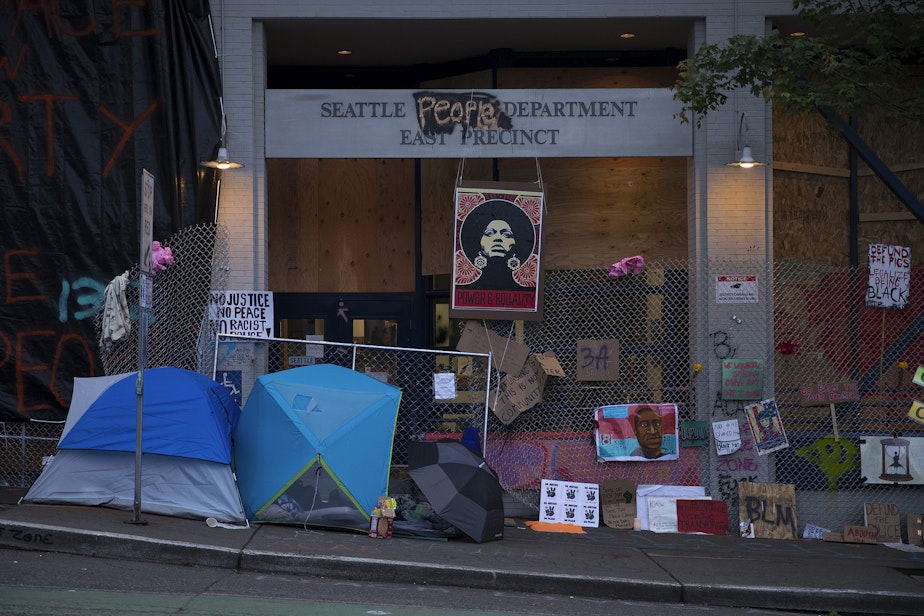
Recall June 2020.
George Floyd has been murdered by police in Minneapolis, and the video of his death is so shocking that people across the nation pour onto the streets in protest. In Seattle, demonstrators face off with police at their outpost in the bohemian Capitol Hill neighborhood.
Most protests wane, but this one grows stronger. People return night after night, undeterred by cops shooting blast balls and spraying chemical gases. A yellow-greenish haze drifts through the neighborhood.
On the eleventh day, in a move that surprises even the Seattle police chief, officers at the East Precinct pack their guns and case files and drive away on armored trucks. Within the department, there is disbelief and a feeling that they surrendered the castle.
But the immediate result is peace: The protesters march past. The precinct does not burn. And six blocks of Pine Street become the Capitol Hill Autonomous Zone, an unpoliced encampment that is part protest, part performance, and part social experiment.
There are no leaders in this autonomous zone. There are speakers, and free food, and free coffee. A funk street band plays. Mayor Jenny Durkan predicts a “summer of love.”
But in all this, an unanswered question: Who made the call to leave East Precinct? The Seattle Police Department is rigidly hierarchical – no way was this an ad hoc, get-up-and-go situation.
For the last year, the mystery has endured as the leaders closest to it –Durkan, Chief Carmen Best, Assistant Chief Tom Mahaffey, the incident commander – offered contradictory, vague accounts, or, in Mahaffey’s case, none at all. No one raised their hand to take credit, or blame, depending on how you see the situation in hindsight.
Was it the only way to de-escalate, to prevent more harm to protesters and cops, or did it lead to four people getting shot, including two teenagers who died, because police weren’t there to escort ambulances, per protocol, into the autonomous zone?
This question has dogged officials and Seattle's Office of Police Accountability – and us.
We have an answer, finally. What follows is a chronology of what happened, based on nearly two thousand pages of public records in the form of emails, texts, and instant messages, plus six interviews with people across city departments who have intimate knowledge of the events. The people interviewed spoke on condition of anonymity.
T
o explain how the East Precinct on Pine Street emptied out on Monday, June 8, we’ll rewind to the beginning of the weekend.
Saturday, June 6
For a week, protesters and police have faced off on Capitol Hill. Cops monitor demonstrations, but this time is different; they are the flashpoint.
Some cops on the line feel the protesters don’t get it. They are Pine Street, the lefty precinct, many of them Black and brown and female and queer. They are not Derek Chauvin, the man who murdered George Floyd.
But to the demonstrators, they are the brute force arm of white supremacy, a system that molds well-intentioned rookies into yes men, the reason George Floyd and other Black people are dead. They present as a menacing block of uniforms and face shields and batons, including one that has a smiley face drawn on its tip, a sarcastic eff-you to protesters. The explosive “blast balls” and the tear gas round out the vibe.
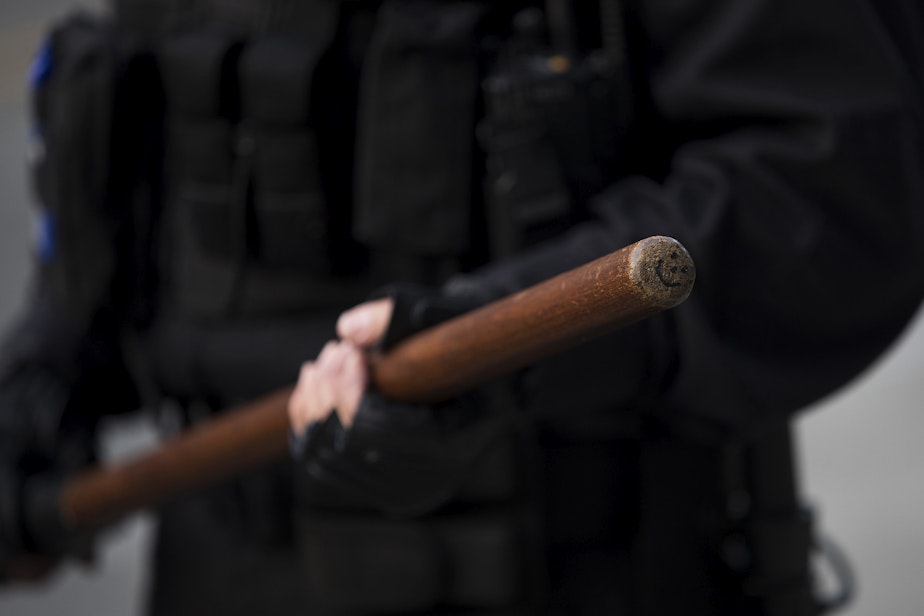
All this to prevent protesters from marching past their precinct.
Blast balls and tear gas start again tonight, news of which reaches city council members who rush to Capitol Hill.
“I just left my baby who was sleeping to come out here, to stand in solidarity,” says Teresa Mosqueda, a city council member, in an Instagram video. “Because other people’s babies are dying at the hands of police.”
Sunday, June 7
Why not let protesters march past the precinct?
They could set fire to the building, for one, police say. Or break in and find the informant files, for two. And then what?
A rumor spreads among police about plans to leave Pine Street, an unpopular notion, particularly among the old guard.
“If you give up Pine Street, you give up the building and everything in it – weapons, computers, vehicles, everything,” writes Lt. Grant Ballingham to Tom Mahaffey and Deanna Nollette, two assistant chiefs. “The Alamo comes to mind.”
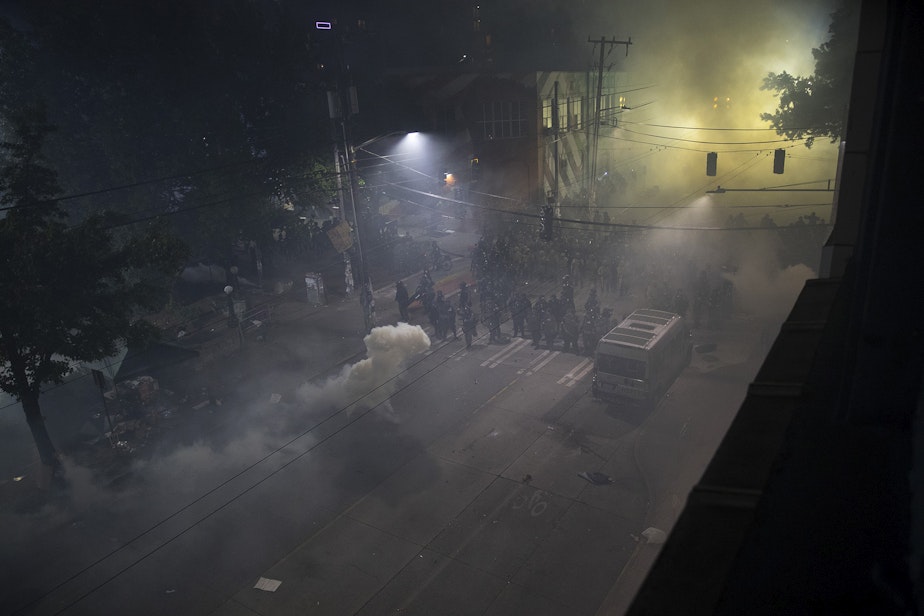
Mahaffey, the incident commander for the protests, has been with Seattle Police since 1992, when he was a patrol officer. He is described as smart, a little calculating, and reliable. He sleeps little these days, sending emails at all hours.
Mahaffey addresses the rumor in a department-wide email sent that evening. “We will not abandon one of our facilities to those who are intent on damaging or destroying it,” he writes.
An hour later, chaos.
At 8:20 p.m., a 31-year-old man drives into the crowd. He shoots a protester in the arm. The clash between police and protesters intensifies.
Later in the night, a police blast ball hits a young woman named Aubreanna Inda in the sternum. Her doctor will tell her that she died three times before they were able to fully revive her.
Seattle Mayor Jenny Durkan and her staff have watched these nights unfold from the Emergency Operations Center in Pioneer Square. The operations center is the city’s nervous system in times of crisis, a hub where police radios click and beep, and giant screens broadcast live video feeds from Capitol Hill.
The police have shifted tactics daily, but to those watching from the center, the changes look cosmetic. Higher fencing. Racks over here instead of over there. An “immovable” barricade trucked in from Joint Base Lewis McCord that protesters dismantle in 20 minutes.
Durkan is losing patience, and Chief Best knows it.
Around 10 p.m., Adrian Diaz, an assistant chief who, months later, would replace Best as the department’s interim leader, emails a small group, including Mahaffey and Chief Best, with a fresh suggestion: Engage the crowd. Talk to them.
“We have been in crisis mode,” Diaz writes. “I can identify the officers, about seven total, to start extensive outreach to all ethnic and demographic organizations to start working on building trust.”
In a separate email thread that doesn’t include Diaz or Best, Mahaffey’s deputies confer. They question this approach.
Mahaffey responds to the group, this time including Diaz and Best.
“I don’t think the strategy would be effective with the crowds we are dealing with late at night,” he says.
His deputy, Kevin Grossman, responds to Mahaffey directly, “I agree,” he writes.
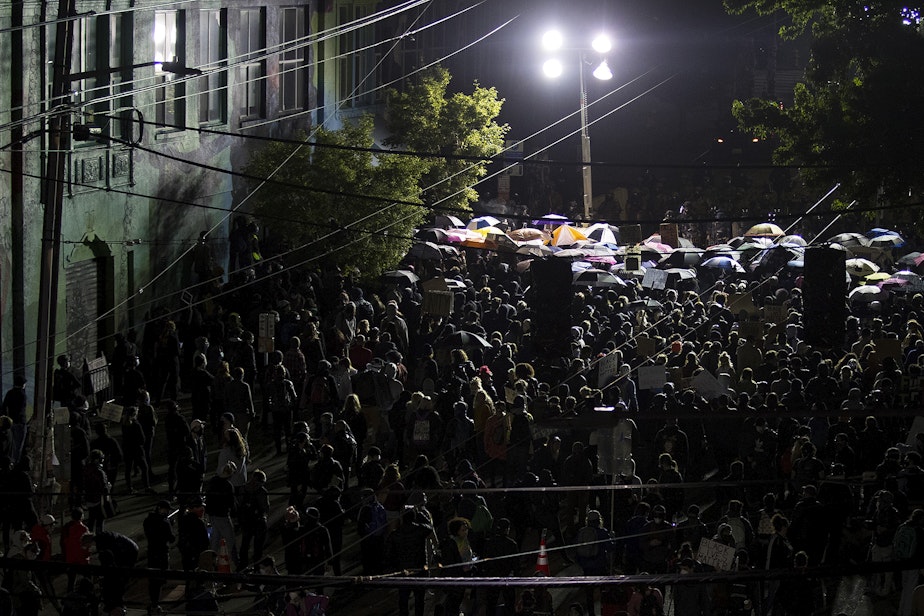
Monday morning, June 8
At 7:30 a.m., Durkan calls for a meeting at the Emergency Operations Center. These nightly standoffs have drawn national media attention. Chaos in Seattle has become a talking point for pundits more interested in decrying unrest than the killings of Black Americans by police. It’s not a good look for the city or its mayor.
Around 10 a.m., city agency heads convene – including the police assistant chiefs, who come dressed in full uniform. Durkan does not attend this meeting; she has just learned that she was doxxed, her home address made public. She is moving out.
Tempers flare. Mahaffey, the incident commander, shouts that he will not give in to protesters.
Mayor’s office staffers yell back that they’ll be out of work within a week, that the City Council could use an emergency clause to remove the mayor.
This doesn’t move the police commanders – the mayor’s staff isn’t their concern – but Casey Sixkiller, a deputy mayor, reframes the situation. Durkan is the only person in city government on your side, he says, according to several people in the room. If Durkan is ousted, Council President Lorena Gonzalez replaces her by default, and then you’re sunk, he says. Gonzalez is an easy bogeyman. She is a former civil rights attorney who has taken on the department before, and who supports a “reimagining” of the police.
Beyond City Hall drama is a more immediate fear — that the East Precinct could burn. A precinct in Minneapolis, where George Floyd was killed, burned to the ground the week before.
Fire Chief Harold Scoggins spells out the risk. The East Precinct sits in an old auto garage built in 1926. Wood frame foundation, shared walls with more than a hundred apartment units. If the precinct catches fire, the whole block goes up, Scoggins says. “No way I can stop it, and people will die.”
The conversation becomes whether protesters should be allowed to walk past the precinct – leaving the precinct is a non-starter.
“We’re opening up the line,” Best says emphatically. “We’re not giving up the precinct.”
After an hour, Mike Fong, senior deputy mayor, asks Best to join him in a side room. The assistant chiefs trickle in.
Stephanie Formas, Durkan’s chief of staff, walks in. She takes a dry erase marker and draws a rectangle on the board to mark the East Precinct. The assistant chiefs discuss options, checking in with Mahaffey, because he’s the incident commander.
Around noon, they disband.
They have five hours until protesters start arriving. Five hours to come up with a new plan.
At a police office in Belltown, Mahaffey and his deputy, Capt. Grossman, meet in a small command room with four or five others.
It’s here that they decide to leave the East Precinct. “It’s too dangerous to stay there,” Grossman says.
It’s an unexpected pivot. Hours earlier, Mahaffey had shouted down a room over letting protesters walk by the precinct. Between then and now, he has changed his mind. Maybe it is the mayor’s staff, begging police to consider an alternative approach. Or Fire Chief Scoggins, who warned of disaster should the precinct burn. Or maybe it is his deputies, walking him through what it would look like if police removed themselves from this tense equation.
He does not tell Chief Best about this plan.
Monday afternoon, June 8
Brandi Kruse, an anchor with Q13 Fox well-sourced among Seattle police, tweets that three “police sources” have told her they’re leaving East Precinct. “Items of value will be taken out and building will be secured as best they can,” Kruse writes.
Other assistant chiefs work on a draft email to tell the staff about the plan discussed at the Emergency Operations Center: to let protesters march past the precinct. Assistant Chief Deanna Nollette sends a version to Chief Best. Mahaffey’s team, meanwhile, works on another.
At 3:28 p.m., Mahaffey, with Best’s approval, sends an email to all sworn staff that shares half the plan — and not that they’re leaving the East Precinct.
“To the Women and Men of the Seattle Police Department,” Mahaffey writes to the sworn officers. “The decision has been made to allow demonstrators to march past the East Precinct today.”
As his email lands in inboxes, officers at the East Precinct prepare to go.
B
ack at the Emergency Operations Center, the mayor’s staff hear snippets from other city departments: computers being removed from the precinct, fencing going up.
Deputy Mayor Fong calls a captain. “What’s going on?” he asks. Fong, normally diplomatic, is frustrated.
Ask Mahaffey, the captain says.
“Tom’s not answering his phone,” Fong replies.
Chief Best, too, senses the plan has shifted and starts calling. “Tom’s not answering his phone,” she says to one of the people she calls.
Fong and Formas, Durkan’s chief of staff, drive to the precinct to see for themselves. When they arrive, the scene is apocalyptic. Cops with duffel bags of guns and stacks of homicide case files rush to armored vehicles, preparing to leave.
Lt. Marc Garth-Green, the day-of commander reporting to Mahaffey, stands outside the precinct directing traffic. Moving vans are parked to the side.
“What's going on?” Fong asks.
"We're leaving," Garth-Green says.
"Who's staying?" Stephanie Formas asks.
"No one,” Garth-Green says. “Everyone is leaving. No one is going back in."
Garth-Green tells Fong and Formas that police will stage at Volunteer Park, two minutes away.
Officers board the armored vehicles, drive around the corner, and poof, just like that, the East Precinct is empty.
Within minutes, it seems, people walk up Pine Street and past the precinct.
Best still does not know that the officers have left.
“We’re not going to evacuate or abandon the East Precinct,” she says in a statement that afternoon. “We will be hardening the East Precinct facility by boarding up the exterior windows and applying fire retardant to the building exterior and installing fencing.”
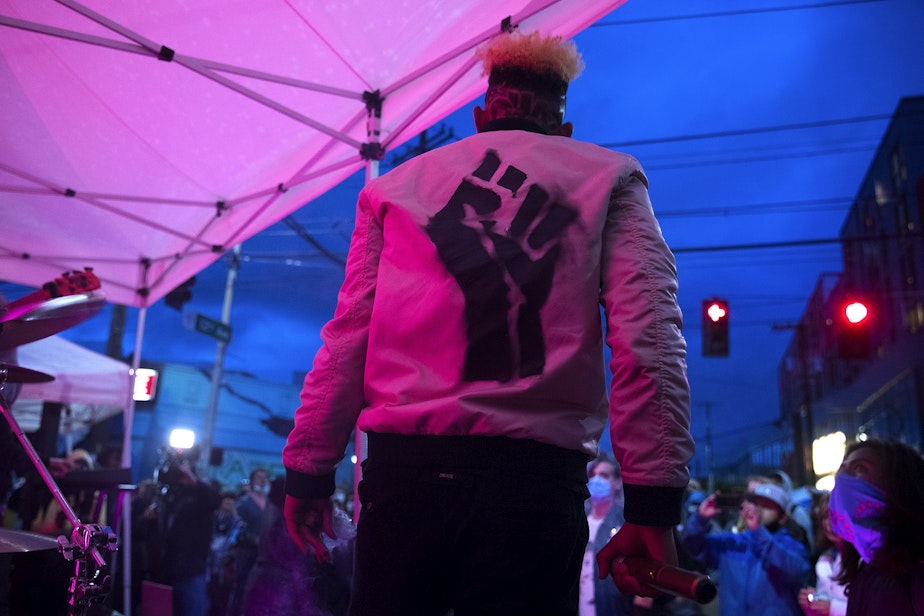
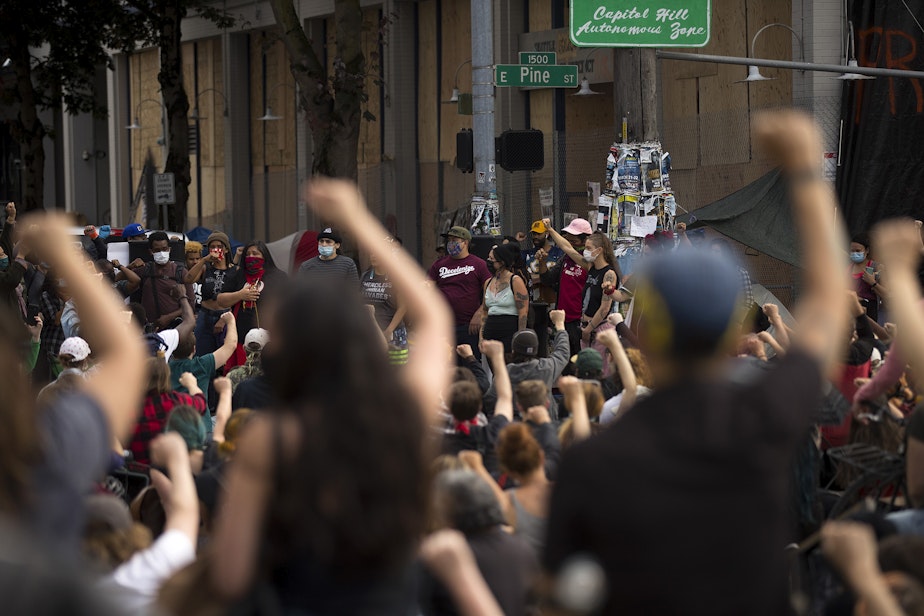
Monday night, June 8
Mike Fong texts Chief Best: “Chief, checking in from EOC, looking okay.”
Best replies, “So far so good. Sitting here with Chief (Adrian) Diaz having a bite.”
Best believes this is temporary, that they will return to the precinct the next day.
But as she finishes her meal, Pine Street morphs into an autonomous zone with armed guards. People sit on blankets to watch Ava DuVernay’s documentary, 13th, which draws a bold line between slavery to mass incarceration of Black Americans today.
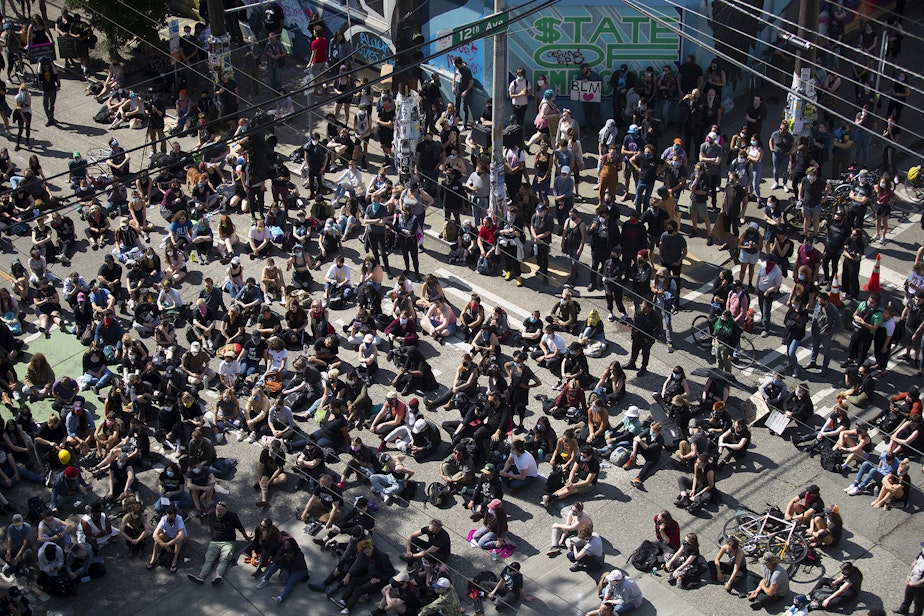
Fallout
When the sun comes up over the autonomous zone, the police have not returned. Chief Best is beside herself.
She believes the mayor’s office made the call to abandon the precinct; it doesn’t occur to her that one of her staff would make a call this big without consulting her.
Best keeps these thoughts to herself. Her focus is on getting the precinct back. She leans on Mahaffey to come up with a plan.
In an email to a friend that evening, Mahaffey writes that these have been the most challenging couple weeks of his life. “It is very disappointing what has been happening.”
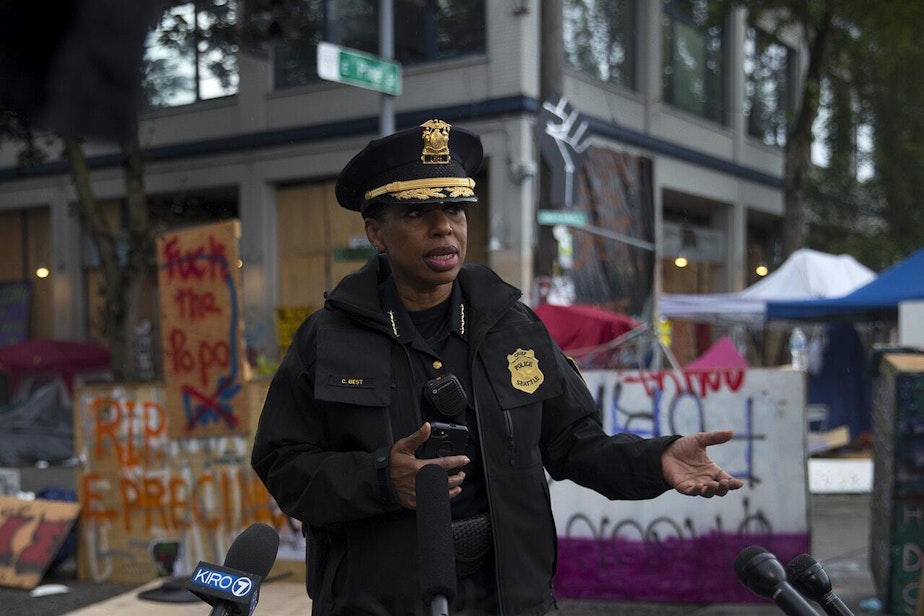
Thursday
Best addresses her officers by video as demonstrators continue to occupy Capitol Hill. East Precinct is just another boarded up building on the Hill. She did not make the decision to leave the precinct, she says. She implies strongly that the mayor undermined her.
“I asked you to stand on that line day in and day out, being pelted with projectiles, to be screamed at, threatened, and in some cases hurt,” she says.
Speaking to the camera, she continues: “Ultimately the city had other plans.”
Durkan’s office is baffled. Sure, they encouraged command staff to consider letting protesters pass, but they didn’t push to leave East Precinct. That wasn’t even part of the discussion.
Formas tells Best, “Carmen, I want to [tell] reporters who made the call.”
Best calls in Mahaffey.
Did you make the call? she asks.
“Well,” Mahaffey starts. “We thought –”
And that’s when she knows.
Speaking with podcaster Jerry Ratcliffe, Best describes the retreat from East Precinct as a legitimate “command decision,” while acknowledging that it wasn’t hers.
“Often there are dynamic situations, things are happening in the middle,” she says. “You’re in charge, and you’re making decisions.”
In the interview, Best persisted in blaming the city.
“The political will was not there to do anything,” Best told Ratcliffe. “The Parks Department is talking to people, and they’re digging up the park and putting a vegetable garden in there. Seattle Public Utilities is bringing in port-a-potties for these folks. ...
“There was no one that I could really turn to and say, ‘Does anyone see how bad this is and how it’s going to be a problem?’”
Twenty-three days later, at dawn on July 1, they return.
Chief Best resigns the following month after the City Council votes to cut the police budget, defunding that would, when finally complete, fall far short of what activists demanded.
In December, Mayor Durkan announces she will not run for re-election. Lorena Gonzalez and Casey Sixkiller, among others, announce their bid to replace her.
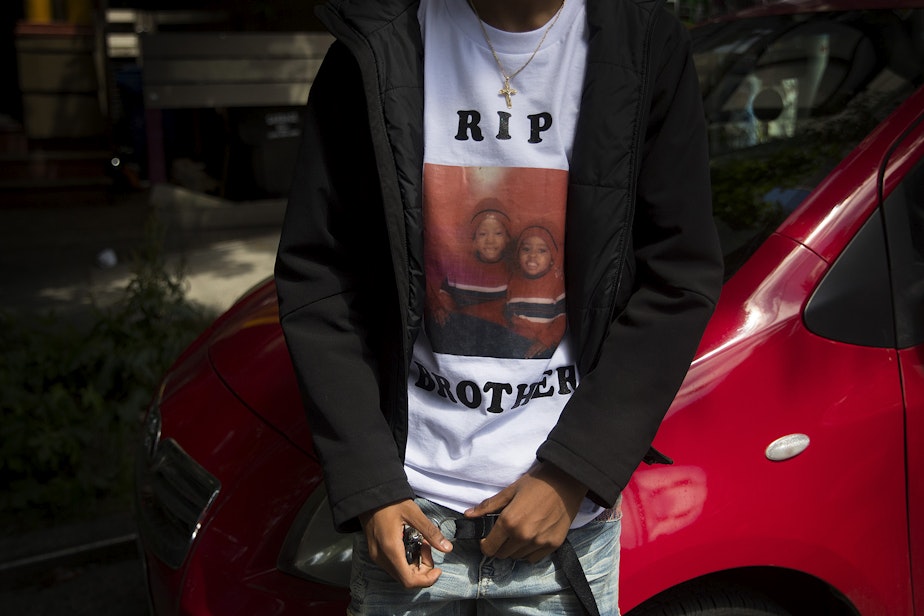
Reflection
In coming weeks, the Office of Police Accountability will release an investigation into whether leaving the East Precinct was “neglect of duty.”
But “abandoned” is the term used when talking about what happened at East Precinct. Policing is a nostalgic profession, and the precinct is where early friendships and memories are made. To leave was to give up on the principle that you stand your ground — like the Alamo. Leaving also signaled loss of control.
Few within the department know who made the actual call to leave the precinct, although they have guesses. When asked why it matters, they mention the two teenagers who died, saying that they might have lived had police been there to clear the way for first responders.
Forgotten, it seems, is that the space between police and protesters was closing, that the police were exhausted, that protesters were getting pummeled, that something had to give — and not people’s lives.
Ashley Hiruko contributed reporting.
If you have any feedback on this story, you can email me at iraftery@kuow.org or click the feedback button on the right hand side of this page. Reach out. We're listening.




